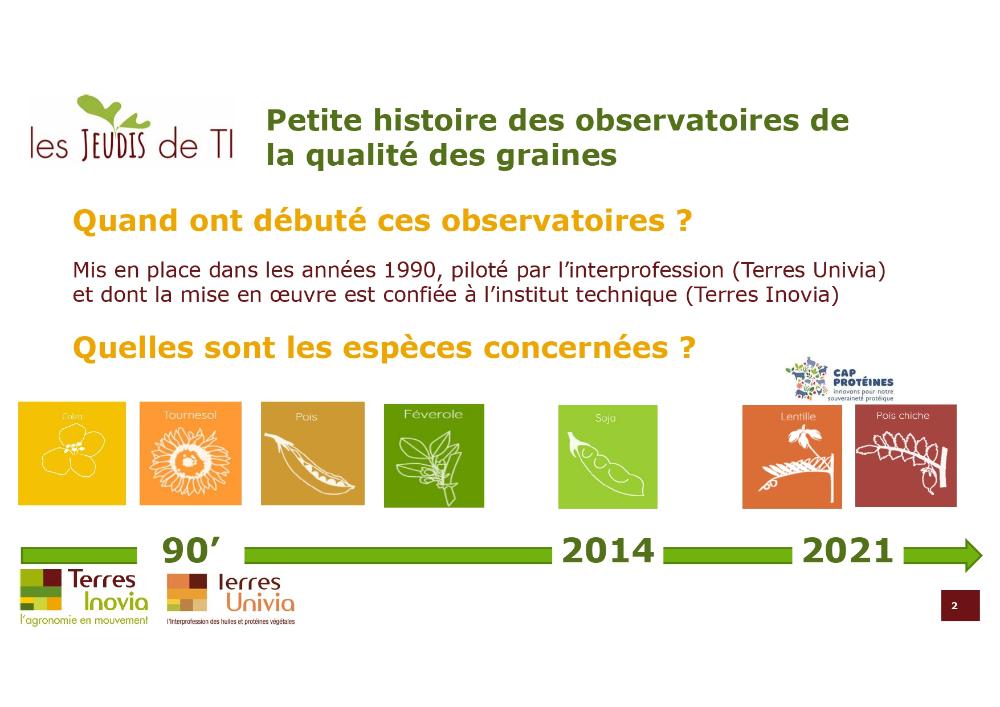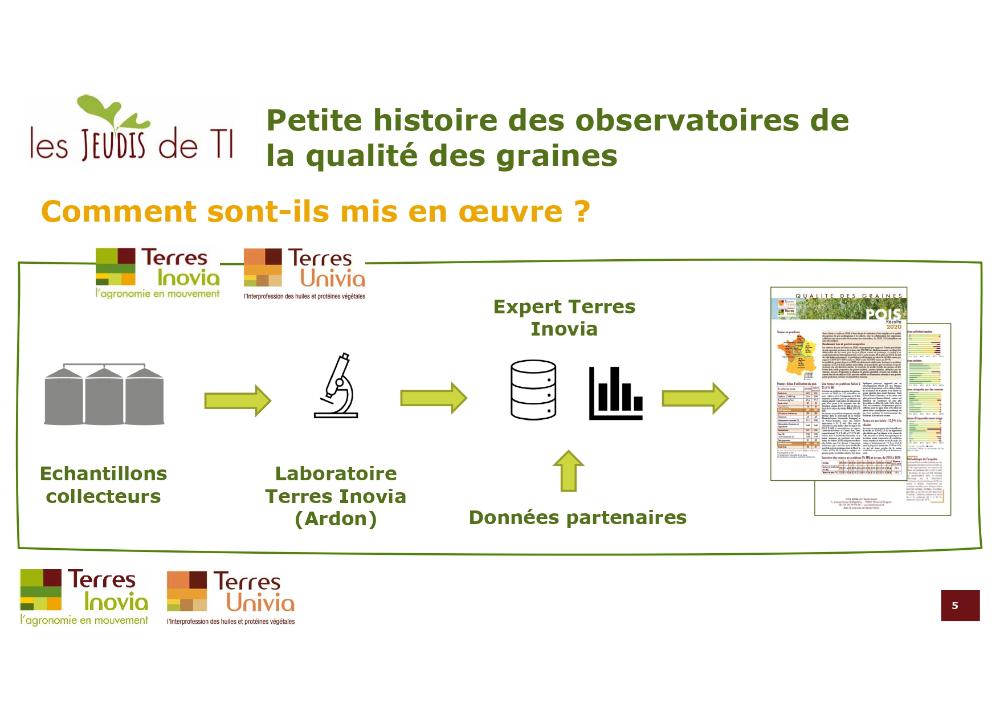Seed quality observatories: lentils and chickpeas arrive in 2022!
Seed quality observatories: lentils and chickpeas arrive in 2022!
For more than thirty years, the technical institute Terres Inovia has been organising seed quality observatories with the support of the interprofessional organisation Terres Univia. Rapeseed, sunflower, pea and faba bean have been studied since the 1990s, and soybeans since 2014. Thanks to the Cap Protéines program pulses will soon be featured in these observatories with lentils and chickpeas. A new dry vegetable observatory is born!

These observatories are used to characterise seed collection in France on an annual basis according to quality criteria. These have a technical or economic impact on the first use or processing (market, outlets), or are taken into account in the transaction amounts. They make it possible to materialise and identify on a large scale the agronomic, environmental and annual effects on quality, and to capture trends in quality.
Recontextualise the quality criteria in the pedoclimatic conditions
The compilation of the data follows a well-established procedure. Samples from collections or monitored plots are sent to the Terres Inovia laboratory for physicochemical analysis in Ardon and analysed. The results are shared with Terres Inovia's experts, who highlight the quality assessment data with the growing and harvesting conditions, as well as the regional specificities.
A double-sided seed quality sheet then summarises all the criteria for each of the species studied. This summary is intended to recontextualise the quality criteria in the pedoclimatic conditions of the production basin and it benefits from a multiannual perspective (5 to 10 years).

Pulses join the observatories
New observatories for lentils and chickpeas were initiated in 2021 with the collection of samples. These were analysed by the Ardon laboratory: water content, protein content, visual quality assessment (colour, spots, etc.), size, etc. These 2021 data will be consolidated with those from the 2022 harvest and will thus make it possible to publish a summary of the French collection references for these species.
For more information on seed quality observatories in general, please see the video below.